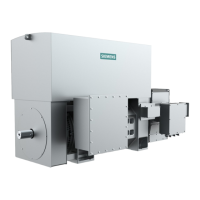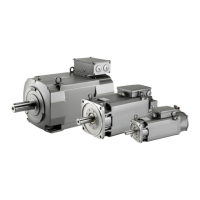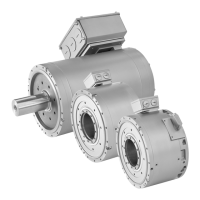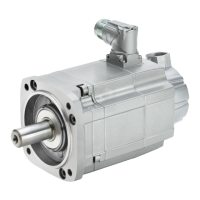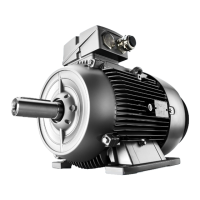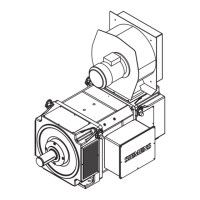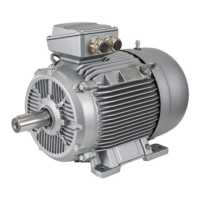Commissioning
8.2 Safety instructions
SIMOTICS M-1FE2 built-in motors
Hardware Installation Manual, 04/2020, A5E50074509B AA
167
Burns as a result of touching hot surfaces
In operation, the motor housing can reach high temperatures, which can cause burns if
touched.
• Do not touch any hot surfaces.
• Allow the motor to cool down before starting any work.
• Use the appropriate personnel protection equipment, e.g. gloves.
Motor damage caused by overheating due to lack of cooling
If the cooling fails or the motor is operated briefly without cooling, this can cause it to
overheat. This can cause motor damage.
Never operate the motor without activated cooling.
Monitor the permitted water inlet temperatures and the cooling air supply.
Operate the motor only in conjunction with an effective temperature control.
Thermal damage to temperature-sensitive parts
Some parts of the electrical motor enclosure can reach temperatures that exceed 100 °C. If
temperature-sensitive parts, e.g. electric cables or electronic components, come into
contact with hot surfaces, these parts could be damaged.
• Ensure that no temperature-sensitive parts are in contact with hot surfaces.
Motor damage when the maximum speed is exceeded
The maximum speed n
max
is the highest permissible operating speed. The maximum speed
is specified on the rating plate.
The motor can be damaged if operated at inadmissible speeds.
• Ensure that the maximum permissible speed is not exceeded. Realize this using a
suitable control system or activate the speed monitoring function in the drive.
Motor damage caused by uneven running or abnormal noise
The motor can be damaged by improper handling during transport, storage or installation. If
a damaged motor is operated, this can damage the winding or bearings and could even
destroy the system.
• In case of uneven running or abnormal noise, switch off the motor.
• Identify the cause.
